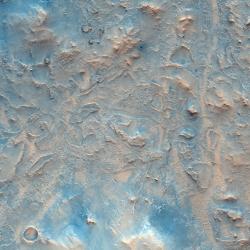Underrepresentation of women is not new
Sunday 11 February 2024 marks the International Day of Women and Girls in Science, an annual initiative to promote women's participation in science, technology, engineering and mathematics (STEM) and proportional gender representation in these sectors. However, it was only in 2015 that the United Nations General Assembly formalised this day through a resolution - crucial to achieving gender equality in science.
The theme of the under-representation of women in STEM disciplines is not new; when we refer to historical figures in the world of science, the names Maria Skłodowska-Curie, Rosalind Franklin or Jocelyn Bell Burnell immediately jump out. This means that these courageous women fought against ingrained prejudices to have their skills and extraordinary contributions to the academic and professional scene, dominated by men, recognised. Despite efforts to encourage more women to choose careers in STEM-related fields, much work remains to be done to achieve equity of opportunity.
Continued effort to improve balance
At the Royal Belgian Institute for Space Aeronomy (BIRA), gender equality is a real priority. We are aware of the fact that our workforce consists of only 32 female scientists for 90 male scientists, which amounts to just over one woman for every three men. Nevertheless, we continue our efforts to improve this balance because we believe that women's talents and abilities will bring significant added value to our organisation.
Tribute to a very special colleague
That is why we are taking the International Day of Women and Girls in Science as an opportunity to pay tribute to a very special colleague, Martine De Mazière. While she was General Director a.i. of BIRA-IASB from 1 June 2011 to 31 January 2024, Martine combined administrative duties with her high-level scientific activities.
She obtained her PhD in physics from the University of Antwerp in 1986 and completed her education during a post-doc fellowship from the Royal Netherlands Academy of Sciences at the University of Amsterdam.
Her career at BIRA-IASB began in December 1988 as a researcher in the space mission project "Grille Spectrometer" aboard mission Atlas-1 in 1992, the same mission that put the first Belgian astronaut, Dirk Frimout, into space. Afterwards, she specialised in remote sensing of atmospheric particles using infrared spectrometry, and became department head in early 2008.
She currently leads the "Infrared Observations" research group and is head of the "Scientific Directorate". Since 2013, Martine also holds the prestigious position of co-chair of the international network "Network for the Detection of Atmospheric Composition Changes" (NDACC). This allows her to collaborate intensively with research institutions worldwide and to direct the "remote sensing of trace gases" group in the European Research Infrastructure ACTRIS (Aerosol, Clouds and Trace Gases Research Infrastructure).
Martine is an inspiring figure for both contemporary and future generations of women and girls in science!

